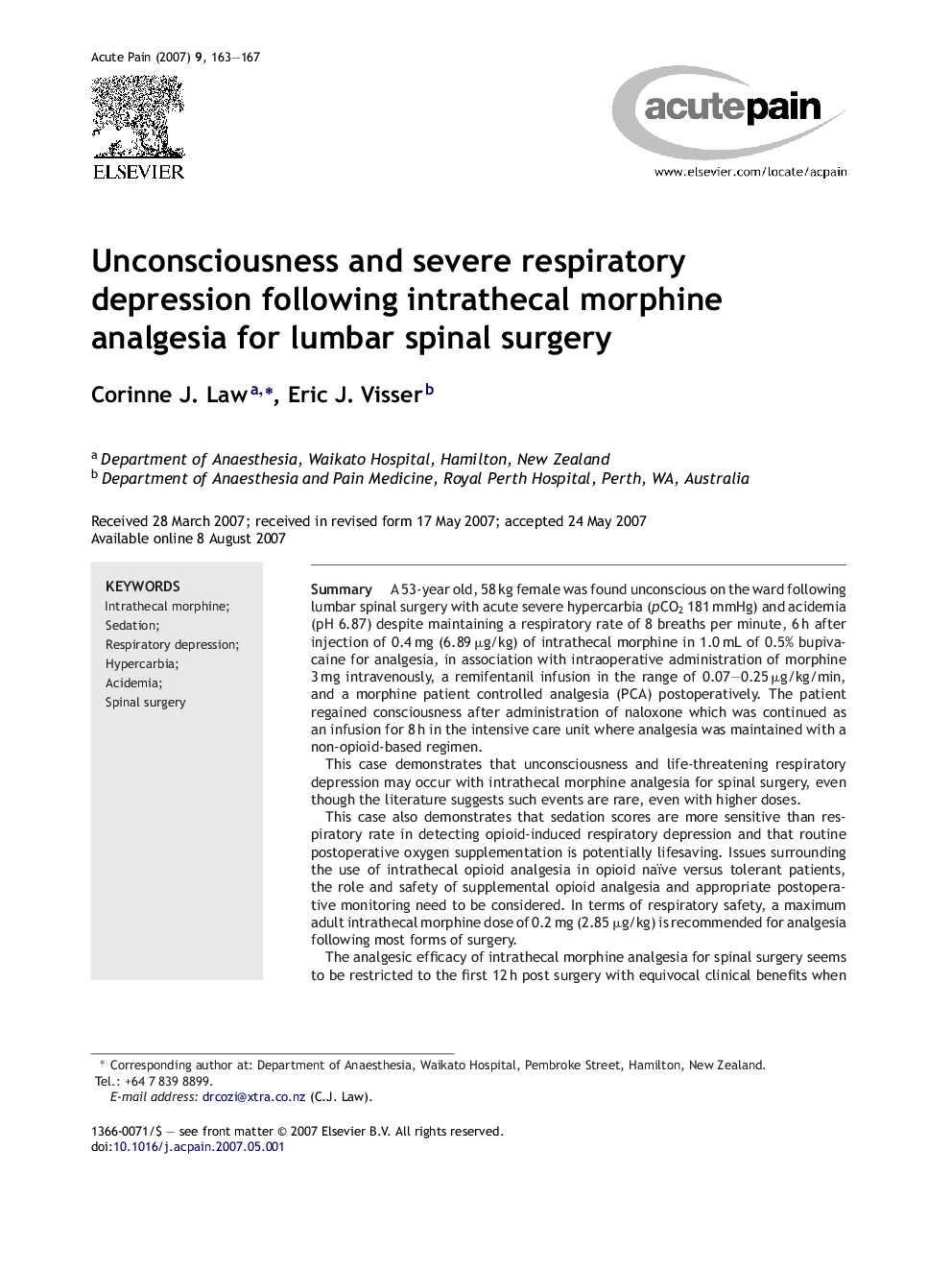| کد مقاله | کد نشریه | سال انتشار | مقاله انگلیسی | نسخه تمام متن |
|---|---|---|---|---|
| 898398 | 915284 | 2007 | 5 صفحه PDF | دانلود رایگان |

SummaryA 53-year old, 58 kg female was found unconscious on the ward following lumbar spinal surgery with acute severe hypercarbia (pCO2 181 mmHg) and acidemia (pH 6.87) despite maintaining a respiratory rate of 8 breaths per minute, 6 h after injection of 0.4 mg (6.89 μg/kg) of intrathecal morphine in 1.0 mL of 0.5% bupivacaine for analgesia, in association with intraoperative administration of morphine 3 mg intravenously, a remifentanil infusion in the range of 0.07–0.25 μg/kg/min, and a morphine patient controlled analgesia (PCA) postoperatively. The patient regained consciousness after administration of naloxone which was continued as an infusion for 8 h in the intensive care unit where analgesia was maintained with a non-opioid-based regimen.This case demonstrates that unconsciousness and life-threatening respiratory depression may occur with intrathecal morphine analgesia for spinal surgery, even though the literature suggests such events are rare, even with higher doses.This case also demonstrates that sedation scores are more sensitive than respiratory rate in detecting opioid-induced respiratory depression and that routine postoperative oxygen supplementation is potentially lifesaving. Issues surrounding the use of intrathecal opioid analgesia in opioid naïve versus tolerant patients, the role and safety of supplemental opioid analgesia and appropriate postoperative monitoring need to be considered. In terms of respiratory safety, a maximum adult intrathecal morphine dose of 0.2 mg (2.85 μg/kg) is recommended for analgesia following most forms of surgery.The analgesic efficacy of intrathecal morphine analgesia for spinal surgery seems to be restricted to the first 12 h post surgery with equivocal clinical benefits when compared with opioid PCA alone. Given the potential risks highlighted in this case report, the decision to use intrathecal morphine analgesia for lumbar spinal surgery needs to be based on a careful analysis of risk-versus-benefit ratio.
Journal: Acute Pain - Volume 9, Issue 3, September 2007, Pages 163–167